Tag Archives: fmx 2019
Stylized cinematography is the topic of Erik Smitt’s presentation at the fmx 2019. He considers cinematography as an important part of authoring. Therefore, he seemed to be very grateful to be involved early in the creative process and be able to set up lighting before animation. Erik is convinced that it makes a remarkable difference if he lights a scene like he would in a real set. Defining the range of movement in a lit scene supports authenticity and believability.
For “The Incredibles 2” Pixar Animation Studios, he carefully orchestrated contrast, camera movement, distance and framing. Traditional lighting techniques were pushed, an eye illumination system applied for caustics, haze and fog were used to enhance depth and color complexity and to add richness to the sets. He studied references of the 1960s and used shaped light like in Hitchcock movies, worked with silhouettes and various color temperatures according to the time of day.
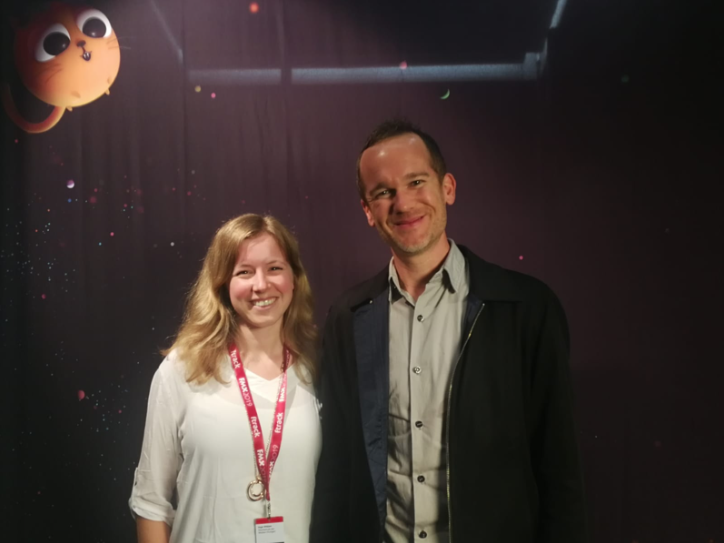
Photo©Peter Ruhrmann
Inga Wätjen, student at Stuttgart Media University, is interested in the challenges of creating a visual style for a sequel and Erik’s work as a DoP for animated features.
Interview: Inga Wätjen
Camera and sound: Peter Ruhrmann
Interview: Katja Schmid and Inga Wätjen
Camera: Peter Ruhrmann and Katja Schmid
Audio: Peter Ruhrmann
Editing: Katja Schmid and Inga Wätjen
Article written by Katja Schmid
About the sheer limitless grammar of storytelling in animation and visual effects
Once again FMX emphasized on the latest technical achievements and their artistic challenges and chances for animation and visual effects. In his humorous and philosophical keynote about bridging the gap (motto of this year’s FMX conference in Stuttgart)
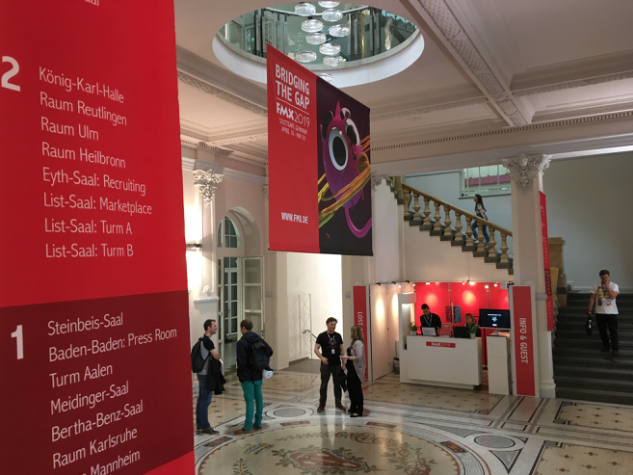
Dr. Jan Pinkava referred to the greek word for art which is τέχνη, and states: “Art is tech and tech is art”. Later in his talk he mentioned the “halo effect of technical difficulty” and addressed the stake of technology for the cinematic experience.
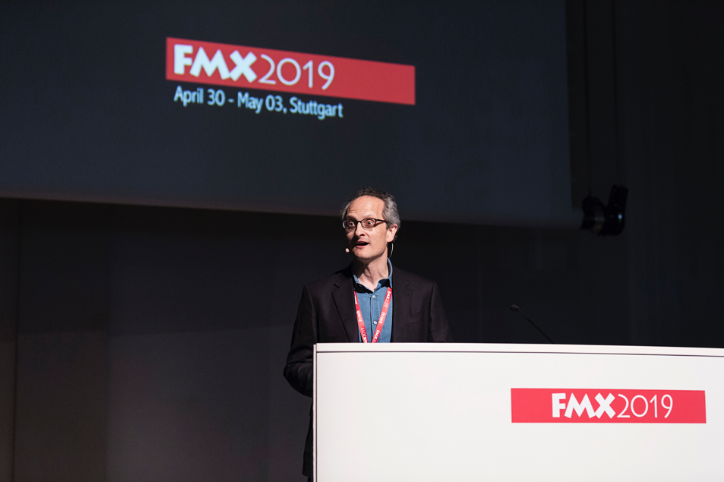
Photo©Dominique Brewing and Luzie Marquardt
Four days of FMX left an impressive mark how today’s filmmaking is driven by the speed of computing and algorithms just to impress and to capture the audience.
In fact, the power of computing has been used for two contrary creative poles of visualization: high abstraction through stylization and on the other side of the spectrum – authentic realism.
To mention the most popular example stylization first, the academy award winning animated feature production “Spider-Man: Into the Spider-Verse” employed newly developed tools to achieve the comic print look in the movie.
Once the general half tone style has been defined more artistic decisions had to be made to obtain the illusion of “print-film”. Thus, the team around VFX supervisor Danny Dimian tested new ways of substituting photorealistic motion blur (with rolling shutter imitation, animation in twos- twelve images per second, lines on edges) and innovative depth-of-field applications such as chromatic aberration, reducing level of detail, abstraction of background elements, smears and stretches and misalignment of color passes for defocus effects. Remapping illumination, hand painted look of highlights and displacement of colors supported the 2d-ish comic look. Read more about this in fxguide.
Moreover, machine learning algorithms have been used to graphic lines on the character’s faces. Lighting supported rich and bold colors, reflections were stylized and graphic elements such as actions lines, curves and scratches were added.
Another impressive example for stylization has been demonstrated by Kevin Baillie (Method Studios, Creative Director & Sr. VFX Supervisor)at FMX. Talking about the visual effects of the photoreal feature “Welcome to Marwen” directed by Robert Zemeckis, the seamless blend of humans and dolls was an impressive visual experience. Scanning the human actors, making a 3d print of their physical dolls, rescanning the dolls and merging real eyes and lips into the CG dolls lead to an unique character appearance. Also, new cinematographic techniques were invented for shooting the miniature world, such as digital tilt-shift lenses and variable diopters to set focus on bent focus planes using a “focus curtain”.
In order to achieve this “cinematic mini-landmark” look (Julian Wood), 84 million hours of rendering were required, using 200.000 processors provided by the company Conductor Technologies.
Also, Dave Walvoord VFX Sup (DWA) makes a note on render power for the animated feature “How To Train Your Dragon: The Hidden World” – 69% of the full render capacity of the whole movie has been used to create the never-before-seen hidden world of an underwater volcano with its giant waterfalls, mushrooms, corals and glowing crystals. This highly stylized world of magical ecosystems is indeed an eye candy- and an evidence for the equation of render power and production value.
The character of Light Fury is a medium-sized Strike Class dragonand rather an animal in the wild than a pet. Supervising Animator Thomas Grummt explains the importance of solid references. Thomas Grummt Supervising Animator (DWA) and Dave Walvoord VFX Supervisor (DWA)
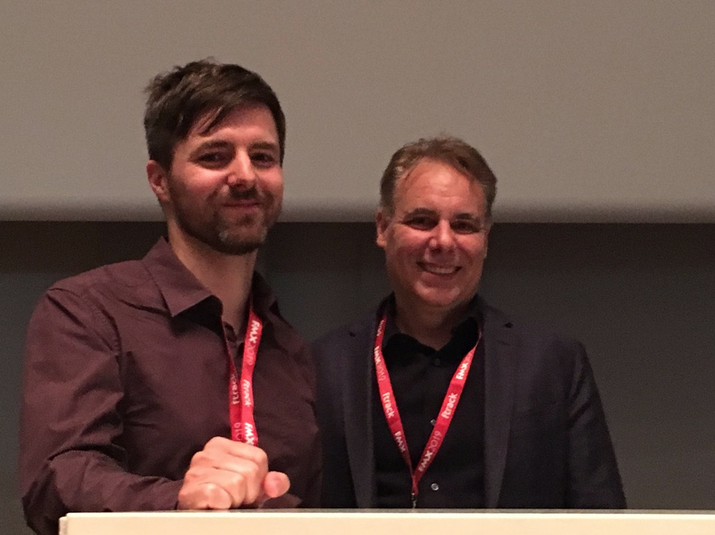
He has studied the movements of big cats, salamanders, birds and white terns before the award winning software Premo has been used for animation.
Nine years ago, Thomas Grummt was attending the talk on “How to Train Your Dragon 1” at FMX. Being a student at Stuttgart Media University, he took the chance to contact the speaker after the presentation. Today, when he walked through the streets of Stuttgart, he said: “I was a bit shocked how much time has passed. But it’s very nice to be back. When I had my presentation yesterday, there were a bunch of students that had basically the same questions that I had back in the days. It feels good to give back a bit.”
We also took the chance to talk to Thomas Grummt during FMX and asked how the increasing realism of cg characters influences animation and what he would recommend to animation students.
Interview: Professorin Katja Schmid
Sound: Peter Ruhrmann
Article written by Professor Katja Schmid
Simon Griesser is an Animator and Director. Previously he worked for different companies as a Game Developer, 3D Artist, 3D animator/ motiondesigner in Vienna and California. Together with Phillip Comarella he founded Salon Alpin, an animation studio in Lissbon and Vienna.
The studio creates innovative, animations, short films and games with a focus on poetic storytelling. They call themselves a ‘sustainable storytelling studio’. Some of their clients include MontBlanc, Greenpeace, Austrian newspaper Falter..
Since 2018 Salon Alpin is represented by Passion Picture Studios. Best known for “Falter inferno” (2015), “Old Man’s Journey” (2017) and the recently with the Annie Award 2019 for Best TV Broadcast Commercial awarded “Rang Tan” (2019).
See more about their work: Salon Alpin.
At FMX 2019 Griesser is talking about designing and directing Greenpeace commercial ‘Rang Tan’ and the conceptual production process of storytelling. We had the chance to sit down with Simon and talk to him about his work as a Director, the immense creativity and uniqueness from Salon Alpin when it comes to animation and techniques and of course about the earth, protecting the environment and raising awareness.
Article written by Lisa Schubert & Malena Trachte
Camera: Lisa Schubert
Interview: Malena Trachte
Editing: Malena Trachte
One of the superstars at FMX 2019 – Trisha Gum is a director and screenwriter. We got to interview her and talked with her about imaginary childhood friends, where she gets her inspiration of and about the differences of directing animators vs directing actors. She also gives some great advice for young filmmakers that are just starting out and tells us about the challenges of being a female director and finding your voice.
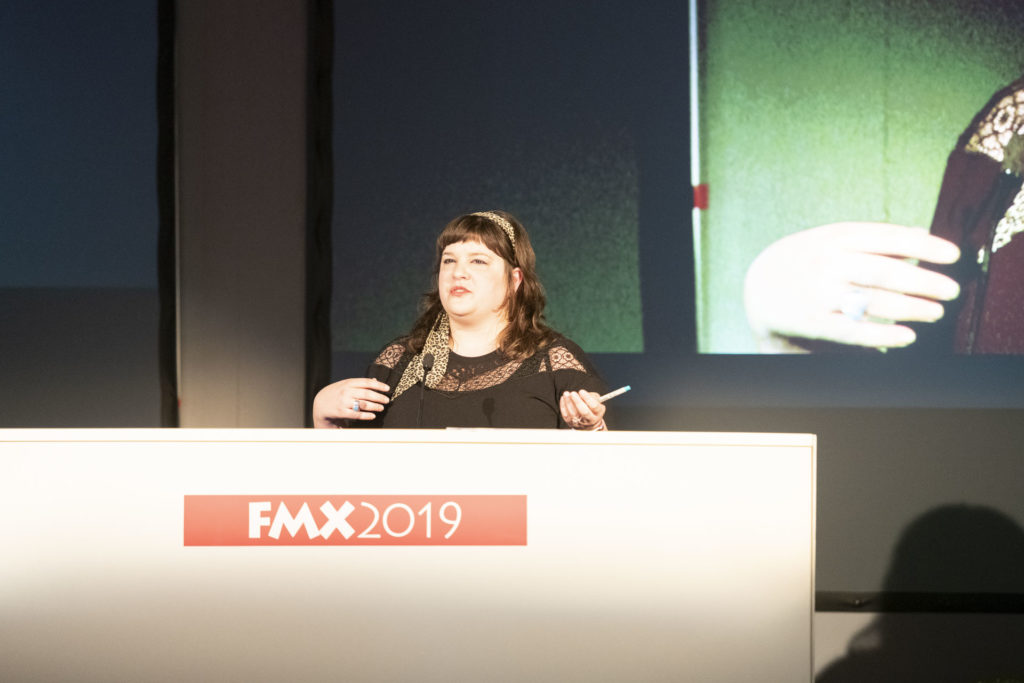
Trisha began her career in art direction and as a set designer, but always knew she wanted to tell stories and worked on her own animations on the side. As a cut paper artist she brings a unique, style and tone to her projects. For her work on Amazons “Tumble Leaf” she was rewarded with an Emmy in 2015. Her latest work includes Story Lead for „The Lego Batman Movie“ and Co Director for „The Lego Movie Two“.
At FMX she talked about storytelling and concept art and takes part in the discussion “Women in Animation presents: Focusing Female Firepower – The path to inclusivity”.
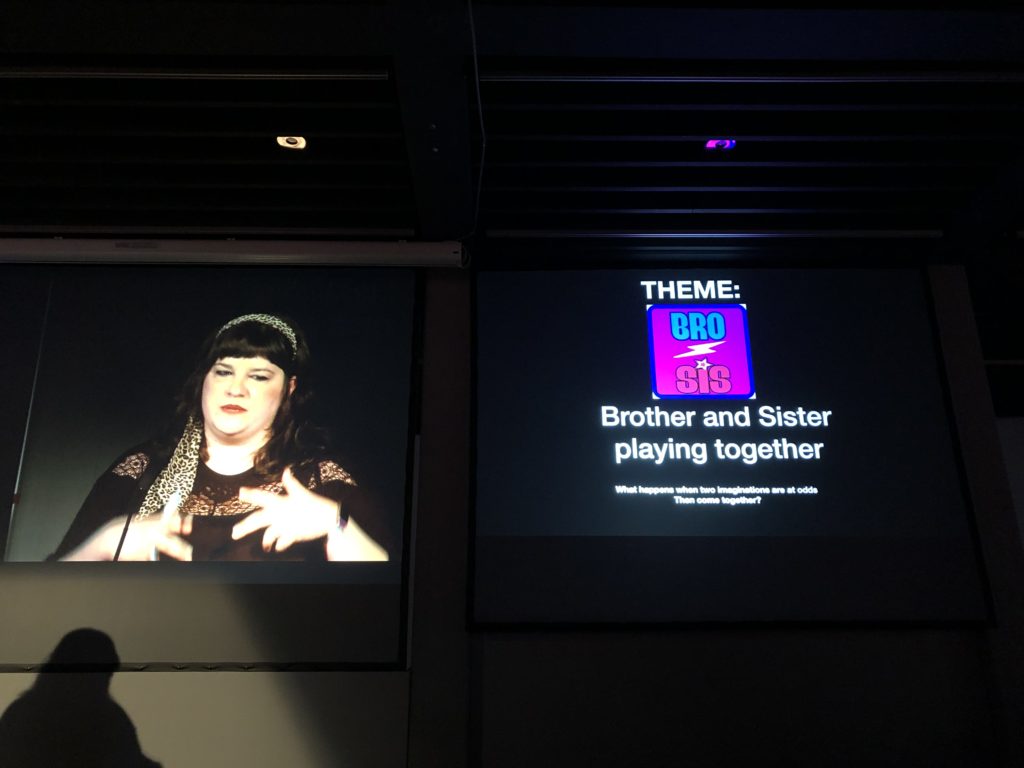
Check out Trishas work: https://trishgum.com/home.html
https://vimeo.com/user10827191
Article written by Lisa Schubert
Interview: Lisa Schubert
Camera: Peter Ruhrmann
Audio: Avina Graefe
Editing: Malena Trachte

